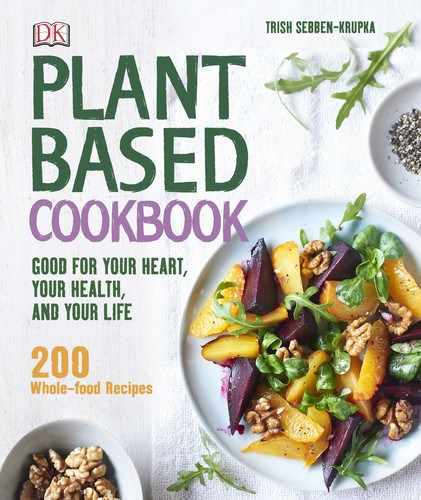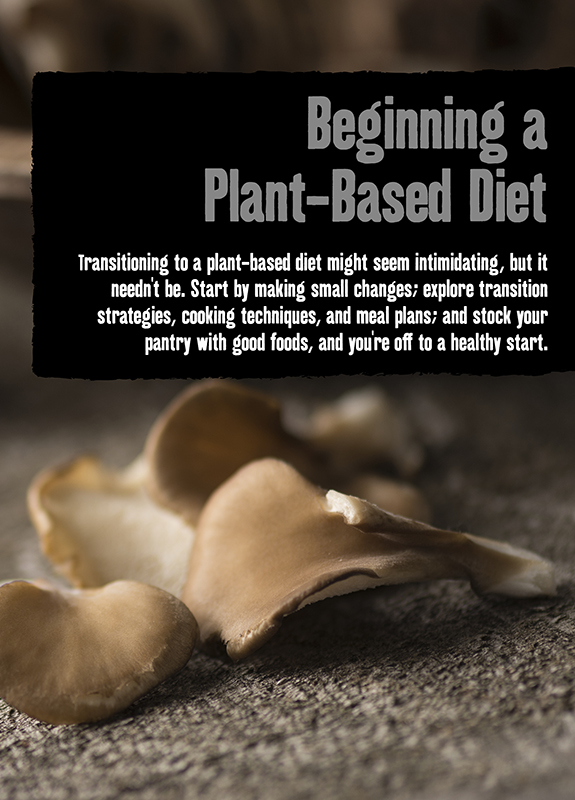
What Is a Plant-Based Diet?
A plant-based diet focuses on foods that come from plants—vegetables, fruits, whole grains, nuts, seeds, beans, and legumes—while avoiding those that come from animal sources, including meat, dairy, eggs, and food ingredients derived from animal sources like honey and gelatin.
Healthy and unhealthy choices still abound in the world of plant-based foods, though. It’s entirely possible to make unhealthy choices when eating plant-based. Whole foods in their natural state are a much better choice than a processed meal from a supermarket freezer or fast-food restaurant, so choose wisely and be mindful.
Why choose plants?
People choose to transition to a plant-based diet for many reasons—to improve health, increase energy, treat and prevent disease, or lose weight, to name just a few. The following list may provide you with the inspiration you need to go plant-based.
A plant-based diet is healthy. Many cardiologists recommend the plant-based diet for its ability to prevent and even reverse heart disease. The plant-based diet also has been repeatedly linked to cancer prevention, weight loss, maintaining healthy intestinal flora, treating diseases such as Parkinson’s and multiple sclerosis, eye diseases, diabetes, and a host of other ailments.
A plant-based diet is beautiful. Who wouldn’t want healthier skin, a slimmer waistline, and a whole lot more energy? Switching to a healthy, plant-based diet that relies on fresh, whole foods leaves you looking and feeling fantastic.
A plant-based diet is youthful. A 2013 study by the Preventive Medicine Research Institute and the University of California, San Francisco, cited the plant-based diet as a key factor in reversing the aging process. Study participants who adopted a plant-based diet (and exercised regularly) showed a 10 percent lengthening of telomeres (the protective ends of DNA strands), which results in longer cell life. By contrast, the participants who continued on an animal-based diet shortened their telomeres by 3 percent. According to Dr. Dean Ornish, who led this groundbreaking study, “Shortened telomeres have been shown to play a role in heart disease, colon cancer, stroke, dementia, and premature death.”
A plant-based diet is sustainable. According to the United Nations’ 2005 Millennium Ecosystem Assessment, agriculture, particularly meat and dairy products, accounts for 70 percent of global freshwater consumption, 38 percent of total land use, and 19 percent of the world’s greenhouse gas emissions. Livestock farming is linked to antibiotic resistance, water pollution, and a host of other environmental catastrophes.
A plant-based diet is clean. In addition to antibiotic usage, the meat industry is rife with disease. Increasingly, we see food recalls due to contamination of meat, resulting in outbreaks of illness from potentially deadly food-borne bacteria.
What do you eat?
It’s easy to eat a plant-based diet. Simply choose a wide variety of fresh, colorful fruits and vegetables, including plenty of dark, leafy greens. Add protein from sources such as beans, legumes, and meat analogs, and fill in with healthy fats from nuts, seeds, and avocados.
| PLANT-BASED FOOD GROUP | EXAMPLES | WHAT IT PROVIDES |
| FRUITS AND VEGETABLES | Apples, avocados, bananas, berries, broccoli, brussels sprouts, cauliflower, citrus fruits, eggplant, kale, pears, root vegetables, spinach, tomatoes, winter squash, zucchini | A broad spectrum of vital nutrients, fiber, protein, antioxidants, micronutrients, healthy carbohydrates, calcium, magnesium, potassium, iron, beta-carotene, vitamin B complex, vitamin C, vitamin A, and vitamin K |
| BEANS AND LEGUMES | Cannellini beans, chickpeas, flageolets, kidney beans, lentils, peas, soybeans | Protein, fiber, antioxidants, vitamins, low-glycemic healthy carbohydrates, B vitamins, calcium, potassium, folate |
| WHOLE GRAINS | Amaranth, brown rice, cornmeal, couscous, farro, millet, quinoa (actually a seed), wheat berries, whole-wheat flour | Fiber, protein, healthy carbohydrates (whole grains), B vitamins, antioxidants, iron, magnesium |
| NUTS AND SEEDS | Almonds, Brazil nuts, cashews, chia seeds, flaxseeds, pecans, pumpkin seeds, sunflower seeds, walnuts | Healthy fats, fiber, protein, magnesium, zinc, calcium, phosphorus |
| MEAT ANALOGS | Organic tofu, seitan, tempeh | Protein, familiar flavors, and meatlike textures to make transitioning easy |
Transition Strategies
Transitioning to a plant-based diet doesn’t have to be difficult. With a little planning, it’s easy to get all the nutrients you need from plant sources without relying on processed, refined foods—and without feeling like you’re missing out on anything.
Start with small changes
For many, the transition to a plant-based diet is gradual. Observing a “meatless Monday” is a great way to start. Begin with one plant-based meal a day and then move on to two meals a day. Start eliminating the worst offenders from your diet, such as bacon and cheese, and have a fresh vegetable dish or two with every meal.
Eat your veggies
The additional fiber in a plant-based diet can be a shock to the system for those accustomed to unhealthy processed foods; large quantities of meat; and few, if any, fresh vegetables, fruits, and whole grains. A gradual increase in your fiber intake can be beneficial if you’re prone to digestive disturbance.
Start by eating a big, raw salad every day. Increase the amount of beans, legumes, fruits, and vegetables you eat, while decreasing or eliminating meat, dairy, and eggs.
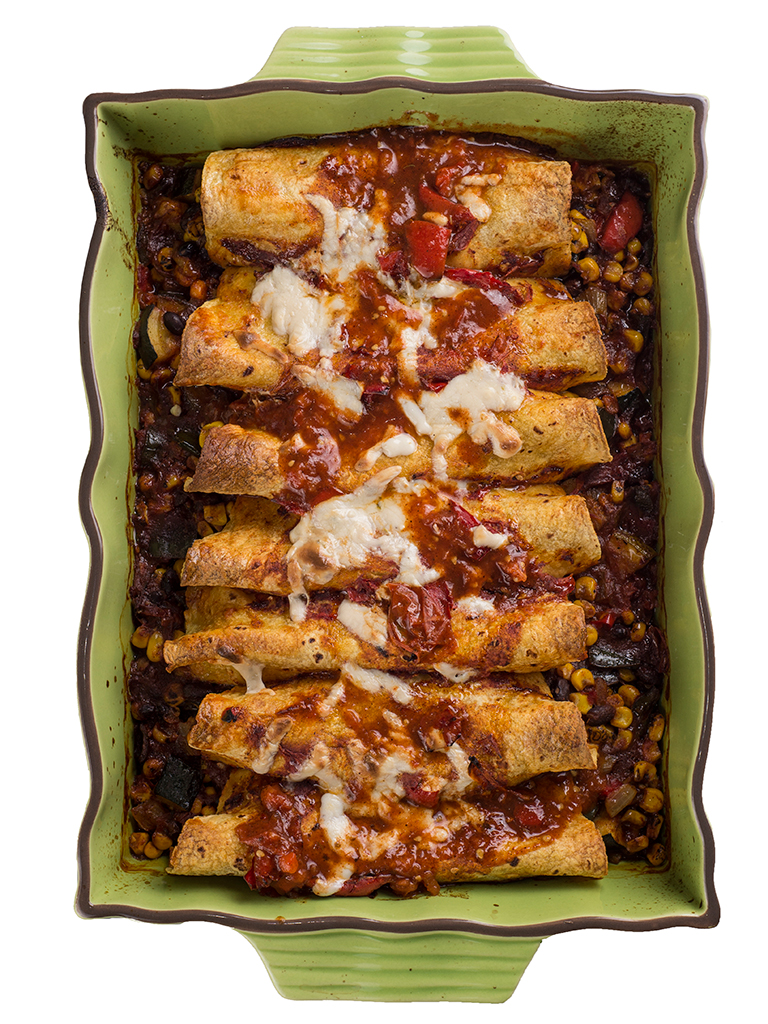
Tomatoes, onions, zucchini, corn, black beans, and peppers meld with plant-based cheese in this zesty comfort dish.
Have a plan
If you’re new to the plant-based lifestyle, you’ll want to do some meal planning. Planning your meals, and maybe doing a little cooking on your day off, can eliminate the urge to backslide into unhealthy eating. You’ll be less likely to give in and order that sausage and pepperoni pizza if you’ve shopped for healthy ingredients or have a veggie casserole in the freezer ready to pop into the oven when you’re hungry but don’t have a lot of time.
Seek inspiration
Websites, magazines, blogs, cookbooks—inspiration is out there for those who seek it. Don’t be afraid to try new things. The worst that can happen is you won’t like a dish or meal.
I find that the foods and techniques I’ve come to love the most are those I resisted making because I thought I didn’t have enough time, or I assumed I wouldn’t like the end result. Try something new a few times a week, add the dishes you love to your repertoire, and forget the rest.
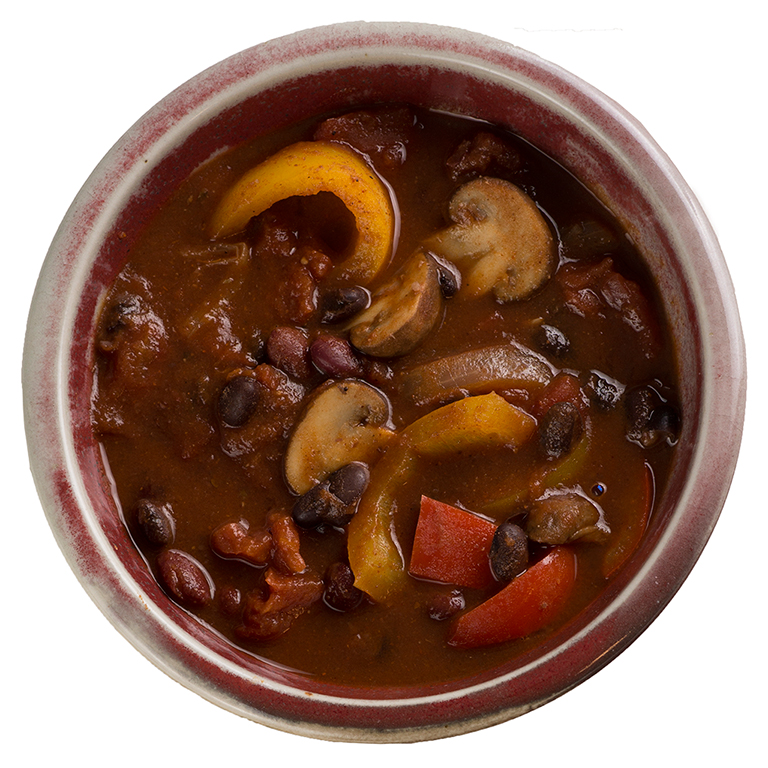
Hearty chilli
Go faux!
Miss the meat? A whole world of meat substitutes is out there, waiting for you to sample, from Tofurky to “veggie” pepperoni. I don’t advocate eating these processed foods every day, but they do help satisfy cravings for familiar foods. And who doesn’t want a little soy chorizo or a grilled veggie dog in their life once in a while?
Explore new frontiers
The plant-based diet is a great opportunity to boldly go where you’ve not gone before. Whether you visit an Indian vegetarian restaurant or gather your friends to create a Middle Eastern meze, you’ll find that many cuisines throughout the world rely on very little (or even no) meat, with vegetables and whole grains forming the bulk of the meal.
The “peasant cuisine” of the Italian countryside my grandmother favored included vegetables grown in the garden, a salad at every meal, plenty of fresh bread, hearty soups, and stews spooned over hot and satisfying polenta. You’ll find recipes throughout this guide that rely on that tradition as well as ones that explore cuisines you might not be familiar with. Be daring, and jump on in!

Imam bayildi
Move at your own pace
Finally, adopting a plant-based diet is all about the journey, and each of us experiences that journey differently. Open your mind and heart, and commit to seeking health and happiness through your diet.
Challenges will present themselves—when you’re traveling, when you’re a guest in someone else’s home, or when you’re just plain tired and hungry and tempted by the familiar. When you fall, dust yourself off and start over.
Any change for the better is a good thing. Give yourself a break, and do the best you can.
Filling Your Plant-Based Pantry
When stocking your plant-based pantry, focus on healthy, whole foods in their natural, unprocessed state. In addition, try some of the specialty foods and ingredients that can make cooking fun and tasty.
Vegetables
Choose a wide array of fresh and frozen vegetables like salad greens; leafy greens such as collards or kale; mushrooms; cruciferous vegetables such as cauliflower and cabbage; and aromatics like onions, carrots, and celery. Frozen vegetables can be a nutritious alternative to fresh, and in-season vegetables from a local farm are more economical and flavorful. I stock my freezer with broccoli, peas, greens, and corn from the farmers’ market.
Fruits
Fresh fruits such as bananas, berries, apples, and pears are great to eat as is or to use in baked dishes. Frozen fruits are fantastic in smoothies and pies, and you should always keep a stock of peeled, ripe bananas in the freezer for baking emergencies.
Beans and legumes
Choose a variety of dried and canned beans and legumes to provide an inexpensive, easy-to-cook protein source. I keep lentils, chickpeas, black beans, kidney beans, and cannellini beans in my pantry. Many recipes in this guide call for canned beans because that’s what most busy cooks rely on to get dinner on the table. Don’t be afraid to cook dry beans from scratch though—it’s easy and economical.
Grains
Keep a variety of grains and grainlike seeds on hand, such as brown rice, basmati rice, cornmeal, whole-wheat pastry flour, all-purpose flour, whole-wheat and semolina pasta, rolled oats, barley, millet, farro, couscous, rice noodles, and quinoa. If you follow a gluten-free diet, almond flour, gluten-free flour mix, and oat flour are wonderful additions to your pantry.
Oils and vinegars
Start with a good extra-virgin olive oil and a neutral-flavored oil such as grapeseed. Coconut oil is great in curries and baked goods. Nut oils add flavor to baked goods and salad dressings, and toasted sesame oil brings a smoky, nutty flavor. Refrigerate oils you don’t use every day. Apple cider vinegar, red wine vinegar, and balsamic vinegar provide plenty of versatility. Rice vinegar is fabulous in Asian recipes, while umeboshi plum vinegar brings a unique salty, sour, pungent flavor to dishes.
Nuts and seeds
Stash raw almonds and cashews in the pantry for baking, making “cheese” fillings and nut milks, and plain old snacking. Walnuts and pecans make everything more delicious, especially when toasted. Chia and flaxseeds are essential to the plant-based baking pantry and can be added to salads, fruit dishes, breads, and oatmeal. Roasted, salted pumpkin seeds (pepitas) are nice, too. Store nuts and seeds in tightly sealed glass jars, and freeze seldom-used ingredients.
Soy products
No plant-based pantry is complete without tofu, tempeh, edamame, and miso. Tofu absorbs the flavor of what it’s cooked with, making it ideal in curries and stews. Tempeh, a fermented soy product, has an umami flavor and meaty texture perfect for grilling, sandwiches, and casseroles. Edamame are whole soybeans and are good in soups, stews, and salads in the same way you’d use beans. Miso is an essential ingredient when building umami flavor.
Condiments
Stock a variety of homemade and store-bought condiments to add to recipes or enjoy on cooked foods. Ketchup, hot sauce, whole-grain Dijon mustard, and plant-based mayo are essentials.
Try these spices, herbs, and seasonings to complement your plant-based diet: black pepper; cayenne; cumin; dried dill, oregano, and thyme; fresh basil, chervil, cilantro, dill, parsley, and tarragon; herbes de Provence; Himalayan black sea salt; kosher salt; nutritional yeast; sea salt (regular and smoked); smoked paprika; turmeric; and more!

Plant-Based Cooking Techniques
Plant-based cooking is easy once you master some basic techniques and equip yourself with helpful supplies: a 2-quart (2L) or more saucepan with a tight-fitting lid; a steamer basket; an assortment of mixing bowls; spoons and spatulas; some heavy, rimmed baking sheets; and a large, heavy sauté pan. A food processor is a nice extra that cuts down on prep time.
Steaming vegetables
Steaming is a simple way to cook vegetables with maximum flavor and nutrition retention. To steam, bring several inches of water to a boil in a saucepan fitted with a steamer basket over medium-high heat. Add the vegetables, cover with the lid, and cook until the vegetables are tender. The table given in this section lists steaming times for several vegetables.
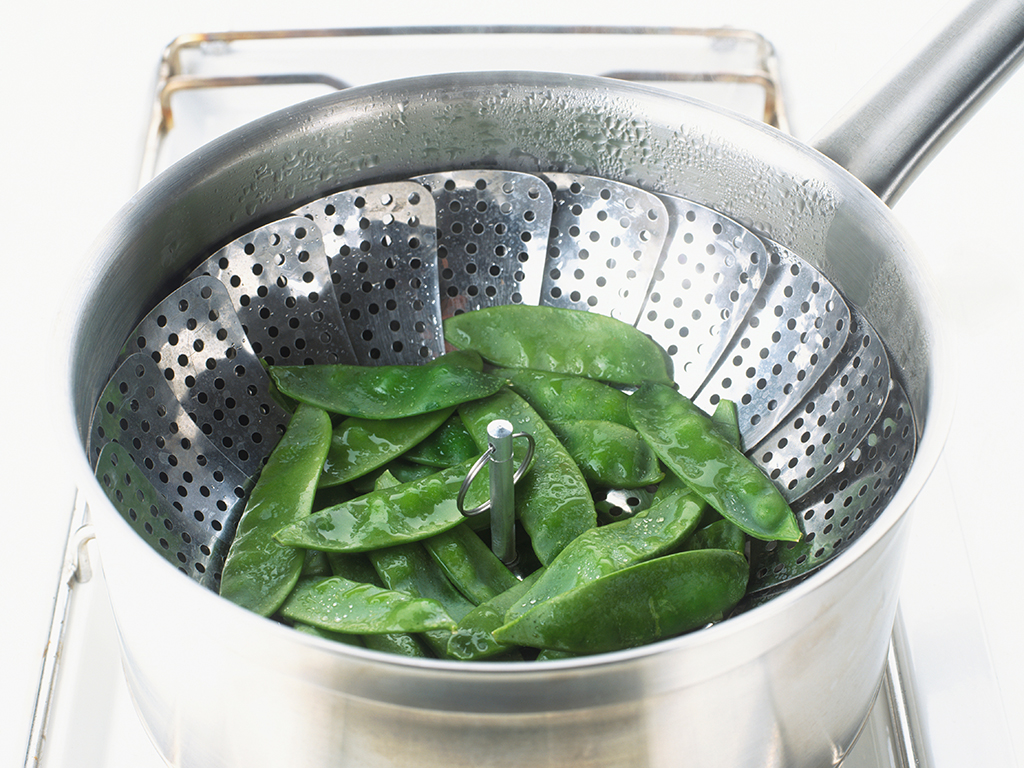
Steaming peas
Snow peas require only 2 or 3 minutes of steaming to come out perfectly tender and crisp. Oversteaming makes them dull and soggy.
| VEGETABLE | STEAM TIME |
| Asparagus | 3 or 4 minutes |
| Broccoli | 4 or 5 minutes |
| Brussels sprouts | 10 minutes |
| Carrots | 4 or 5 minutes |
| Cauliflower | 6 minutes |
| Green beans | 5 minutes |
| Hardy greens (kale, collards) | 7 to 9 minutes |
| Peas | 2 or 3 minutes |
Roasting vegetables
Roasting brings out deep flavors from root vegetables, brussels sprouts, asparagus, broccoli, and winter squash. To roast, preheat the oven to 400°F (200°C). Cut vegetables into uniform pieces, and place in a baking pan lined with parchment paper. Toss with just enough olive oil to coat; season with salt, black pepper, and dried herbs (if desired); and roast, stirring once or twice, until tender and caramelized.
Tender vegetables such as asparagus will roast to perfection in less than 10 minutes, while winter squash and potatoes need more time—up to 45 minutes. Try roasting broccoli, cauliflower, rutabaga, sweet potatoes, turnips, mushrooms, zucchini, small onions, and even green beans!

Roasted vegetables
Roasted vegetables add flavor, nutrition, and a pop of color to any meal.
Blanching vegetables
When you want vegetables to remain crunchy and fresh and preserve their bright green color, or if you’re preparing to freeze in-season produce, you’ll want to do some blanching. To blanch, bring a large pot of salted water to a boil over medium-high heat. Prepare an ice bath by filling a bowl with cold water and ice. Cut vegetables into uniform pieces, and drop in boiling water (see the table given in this section for recommended times). Using a slotted spoon, remove the vegetables from the hot water, transfer to the ice bath, and drain in a colander or on paper towels.
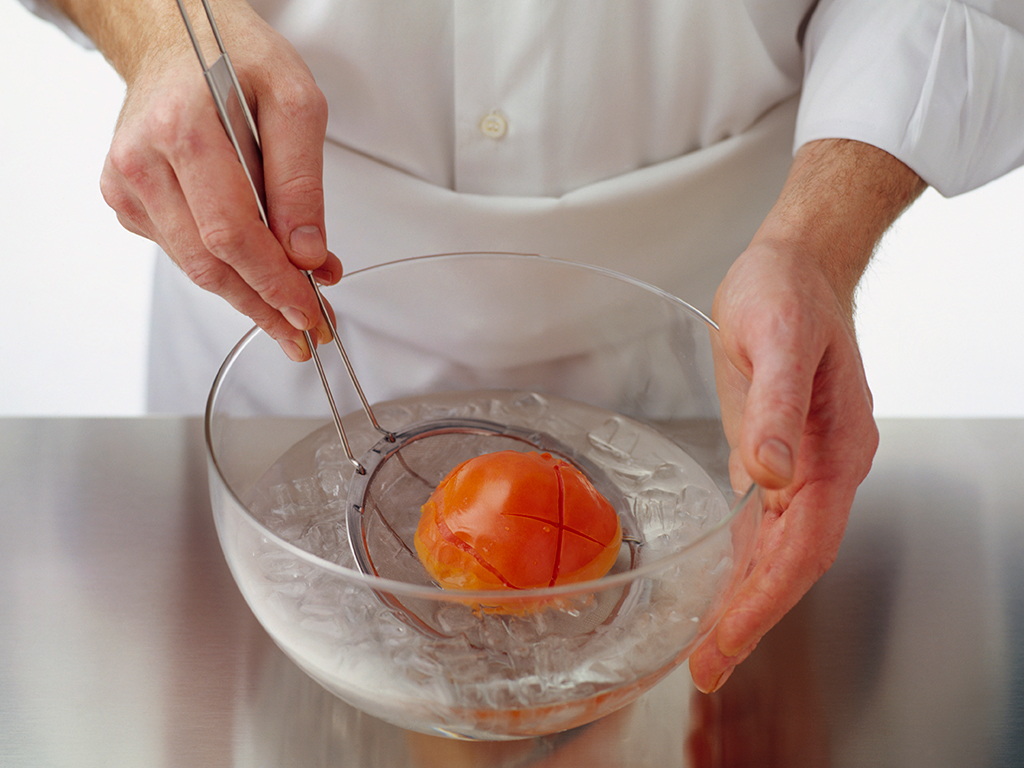
Ice bath
The ice bath is an essential step in blanching. It halts the cooking process, sets color, and loosens vegetable’s or fruit’s skin.
| VEGETABLE | BLANCH TIME |
| Artichoke | 7 minutes |
| Asparagus | 2 minutes |
| Beans (green, snap) | 2 minutes |
| Beans (lima, cranberry) | 2 to 4 minutes |
| Broccoli | 2 or 3 minutes |
| Brussels sprouts | 3 minutes |
| Carrots | 2 minutes |
| Cauliflower | 2 or 3 minutes |
| Collards/kale | 3 minutes |
Sautéing vegetables
A quick sauté lets you cook vegetables with aromatics such as onions, garlic, and herbs for fresh, fantastic flavor. To sauté, heat a small amount of fat, such as olive oil, over medium-high heat in a heavy sauté pan. Add onions, and cook for 1 or 2 minutes, stir in garlic, and cook for 1 more minute. Add vegetables to the pan, and cook, stirring frequently, just until vegetables are tender. Mushrooms, tender summer squash, broccoli, spinach, and peas are all excellent candidates for the sauté pan.

Sautéed greens
Sautéing greens with a little olive oil and garlic is a quick and delicious way to get your daily serving of greens.

Aromatic vegetables
Aromatics such as celery, onions, and carrot add the building blocks of flavor to soups, stews, and sauces.
Cooking rice
With the exception of Arborio rice for risotto, rinse rice before cooking it. Measure the rice, place in a large bowl, cover with cold water, and swish around with your hands to release the rice’s starch and any soil. Drain and repeat three times. Place the rice in a pan with a tight-fitting lid, add water, and set over medium-high heat. Bring to a full, rolling boil, stir once, and cover. Reduce heat to the lowest setting, and cook for the time noted on the rice package. Remove from heat and let stand, covered, for 5 to 10 minutes before fluffing with a fork and serving.

Rice and water
Add rice and cold, fresh water at the same time—don’t boil the water first.
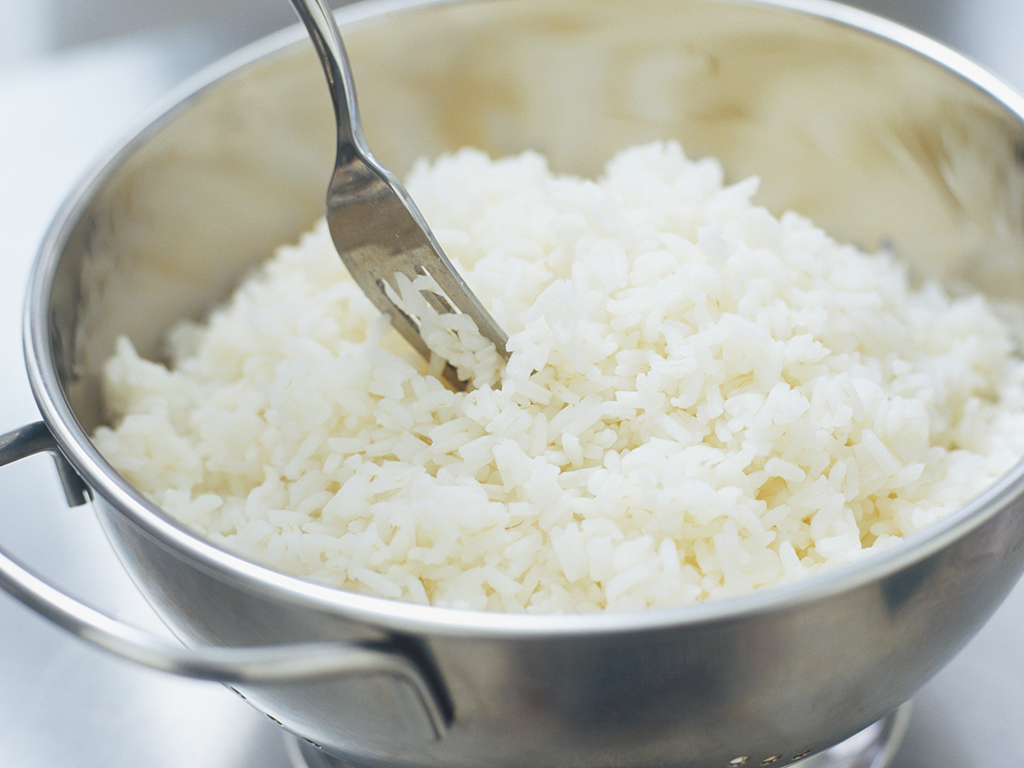
Hold it
You can hold cooked rice, covered and with a clean kitchen towel under the lid, for up to 20 minutes. Fluff with a fork before serving.
Cooking pasta
Cook pasta in several quarts of boiling water, seasoned with about 1 teaspoon salt. Pasta needs plenty of water, and plenty of space to expand while cooking, so use your largest pot. Bring water to a full, rolling boil over medium-high heat, add salt, add pasta, and cook according to the package directions. Pasta is best when cooked al dente, or “firm to the tooth.” Drain pasta, and toss with sauce. Do not rinse pasta unless you’ll be chilling it, as for pasta salad, because the added starch in cooked pasta helps bind it with the sauce.
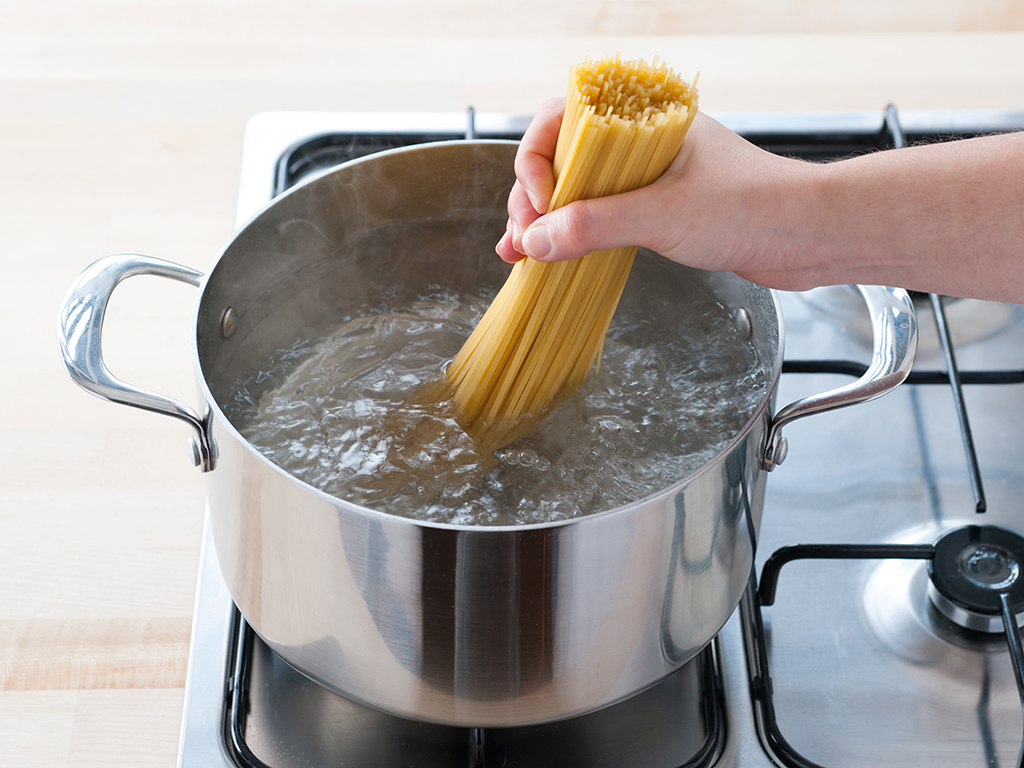
Choose the right pot
Be sure you use a pot that’s large enough to allow the pasta to move around while it boils. Overcrowding yields gummy results.

Al dente pasta
For perfect pasta, boil it only until it’s al dente, or cooked but still slightly firm to the bite.
Cooking dried beans
When cooking dried beans and field peas, soak overnight in plenty of fresh water. Drain, rinse, and place in a heavy pot with 2 inches (5cm) water to cover. Bring to a boil over high heat, reduce heat to a simmer, add 1 teaspoon salt, and cook for about 1 hour or until tender.
If you’re cooking kidney beans, you need to take an extra step. Raw kidney beans contain a toxin called phytohameaggluttinin, which can only be removed by cooking at the boiling point for 10 minutes. After bringing the beans and water to a boil, cook for 10 minutes, skimming off the foam that rises to the top. Then cook as directed. This step, while only 10 extra minutes, is essential.

Storing cooked beans
You can refrigerate beans in their cooking liquid for up to 5 days or freeze for up to 3 months.
Canned beans are easy and convenient, but dried beans are less expensive and their texture is incomparable when cooked from scratch. If you don’t have time for an overnight soak, try the quick-soak method: bring beans to a boil in a large pot with 2 inches (5cm) water to cover. Boil for 10 minutes and then soak for 1 hour. Rinse, drain, and cook as directed. And don’t throw away the bean broth—it’s full of flavor and nutrients and perfect for use in soups and stews.
Cooking lentils
Lentils do not require a soak and cook very quickly—as little as 20 minutes for red lentils and a little longer for other varieties. I like to cook lentils with a little onion and garlic to preseason them for recipes. In a medium saucepan over medium-high heat, heat 1 tablespoon olive oil. Chop a small onion and a few cloves of garlic, add them to the saucepan, and sauté for 3 to 5 minutes. Add 1 pound (450g) lentils with water or broth to cover by 2 inches (5cm). Bring to a boil, reduce heat to medium-low, and cook, partially covered, until tender. Divide into 2 cup portions plus cooking liquid, refrigerate for up to 5 days, or freeze for up to 3 months.

Perfect protein
Lentils are the perfect plant-based protein—nutritious, delicious, versatile, quick-cooking, and affordable.
If you have issues digesting beans, soaking them removes most of the phytic acid and enzyme inhibitors that cause digestive distress. Add a strip of kombu to the cooking water to further increase the digestibility.
Cooking with tofu
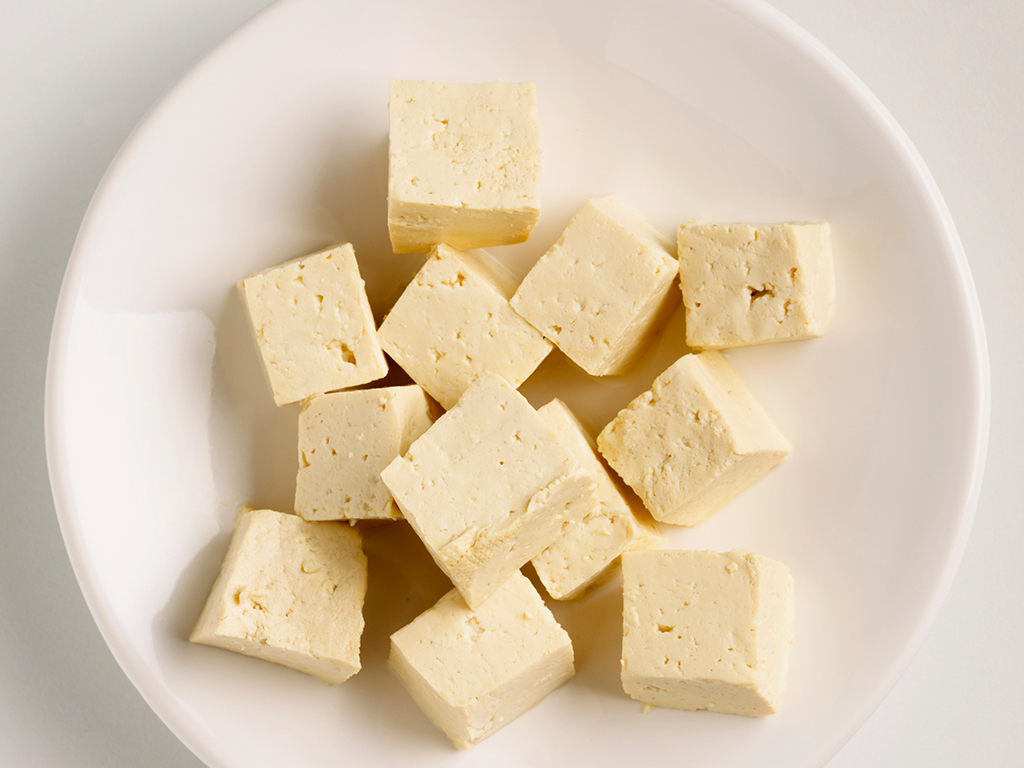
Tofu
Tofu is endlessly versatile. It’s neutral in flavor so it takes on the flavor of whatever it’s cooked with. Drain tofu before using it in recipes by placing the block on a cutting board that’s wrapped in a clean kitchen towel. Set a heavy plate on top of tofu, and add a heavy can on top of that. Let tofu drain for 30 minutes, pat dry, and proceed with your recipe. Tofu can be sliced as for cutlets, cubed for stews and curries, crumbled for an eggless scramble, or blended into cake batters in place of eggs.
Cooking with tempeh
For best flavor and texture, marinate and/or steam tempeh. To steam, cut tempeh into strips or slices. Place it in a baking dish, cover with marinade or vegetable stock, cover tightly, and bake until tempeh is puffed up. This tenderizes and flavors your tempeh.
Cooking with seitan
Seitan is a seasoned loaf made from vital wheat gluten that can be used to simulate the texture and flavors of beef or chicken. Try it grilled or seared in a cast-iron pan for use in sandwiches.

Hearty seitan roast
Brown and then bake loaves of Basic Seitan with sauces and vegetables for a hearty main dish with a meatlike texture.
A quick trip to the produce aisle of a well-stocked grocery yields a variety of meat substitutes—hot dogs, sausages, veggie bacon, and pepperoni. The freezer section stocks “veggie crumbles” that can fill in for ground beef, veggie burgers, “chik’n” patties, and more. Try to limit your meat substitutes to homemade or store-bought seitan, tempeh, or tofu.
Basic seitan




You can find seitan in the refrigerated section of most grocery stores, or you can pick up some vital wheat gluten and make your own!
YIELD 2 (1-Pound/450g) LoavesSERVING 1/6 loafPREP 10 minsCOOK 30 mins
5 cups vegetable stock
2 small yellow onions
2 cloves garlic
1 TB. plus 1 tsp. reduced-sodium tamari
1 TB. apple cider vinegar
1 tsp. Bell’s seasoning blend
1 tsp. baking powder
1/2 tsp. sweet paprika
13/4 cups vital wheat gluten
1/4 cup chickpea flour
1/4 cup nutritional yeast
1/2 tsp. fine sea salt
1/2 tsp. freshly ground black pepper
1 bay leaf
2 small pieces dried porcini mushroom (optional)
1In a food processor fitted with a metal blade, blend 11/2 cups vegetable stock; 1/2 small onion, roughly chopped; 1 garlic clove, roughly chopped; tamari; apple cider vinegar; Bell’s seasoning; baking powder; and sweet paprika until smooth.
2In a medium bowl, whisk together vital wheat gluten, chickpea flour, nutritional yeast, sea salt, and black pepper. Pour in wet ingredients, and stir with a silicone spatula until liquid is incorporated and a rough dough is formed.
3Cut dough into 2 equal pieces, and use your hands to quickly knead into logs approximately 6 inches (15.25cm) long if the seitan will be served sliced, such as in roasts, cheese steaks, or gyros; or break seitan apart into rough chunks for stews or skewered items like satay. Set aside, and allow to rest for 5 minutes.
4Meanwhile, chop remaining 11/2 onions into rough wedges. Place in a large saucepan with a lid along with remaining 31/2 cups vegetable stock, bay leaf, remaining 1 clove garlic, and porcini mushrooms (if using). Set over medium-high heat, bring to a boil, reduce heat to medium, and gently add seitan loaves. Cover and cook over the lowest heat for 45 minutes without lifting the lid.
5Uncover, remove bay leaf, and cool completely in broth before storing. Seitan will keep in the refrigerator, stored in its cooking broth, for up to 3 days, or can be frozen for up to 3 months. Defrost completely in the refrigerator overnight before using.
Seitan prepared in this manner can be marinated with any flavor you like. Grill or sear marinated seitan in a cast-iron frying pan for the best flavor.
Meal Plans
Here’s a sample one-week meal plan, including many recipes from this guide. Add a snack or two every day—such as nuts, seeds, and fresh fruit or vegetables dipped in a delicious dressing or spread like Tzatziki Sauce, Smoky Baba Ghanoush, or Romesco Sauce—and you’re set.
When creating meal plans, think about your time, tastes, and the nutritional value of the foods you’re eating. Also do as much cooking and prep work ahead of time as you can—a little work on your day off makes the rest of your week easier. Chop onions, celery, and carrots ahead; place in zipper-lock plastic freezer bags or containers in 1 cup portions; and use straight from the freezer—no need to thaw. Make a batch of granola on the weekend, and store it in an airtight jar for easy grab-and-go snacks. Soups and stews are ideal to make ahead and refrigerate or freeze for later. Prepare pizza dough up to 2 days ahead and refrigerate. Make a double recipe of Vinaigrette, refrigerate for up to 5 days, shake, and pour over weekday salads. Whenever possible, double a soup or casserole recipe and freeze some in individual- or family-size portions. Soon you’ll have a freezer full of meals ready to defrost whenever you’re crunched for time.

